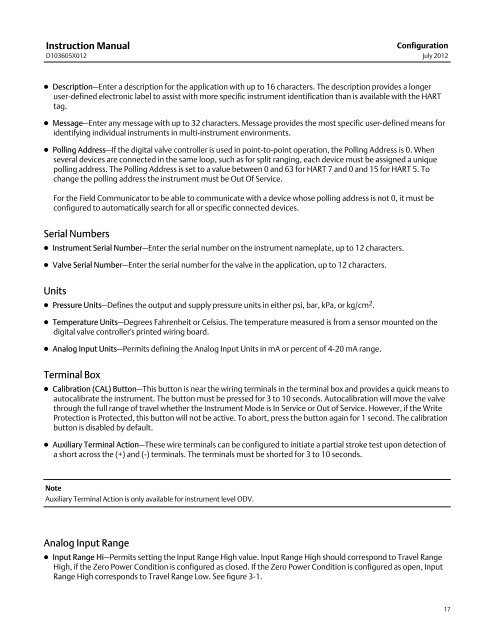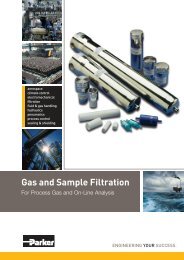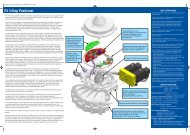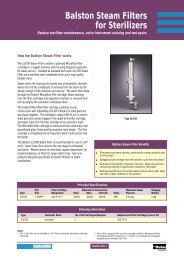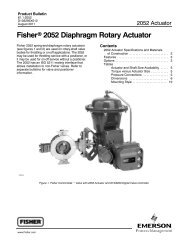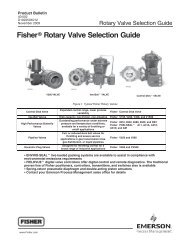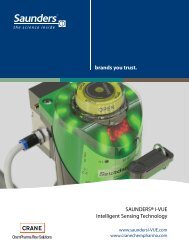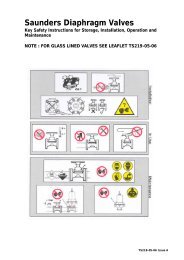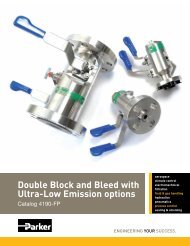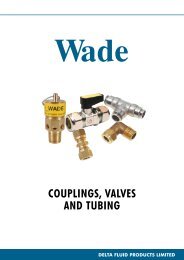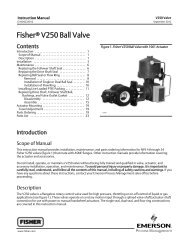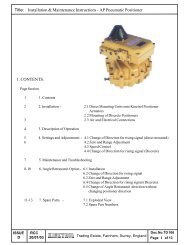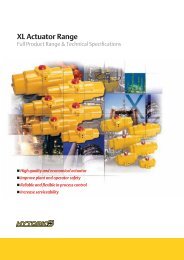Fisher® FIELDVUE DVC6200 Digital Valve Controller
Fisher® FIELDVUE DVC6200 Digital Valve Controller
Fisher® FIELDVUE DVC6200 Digital Valve Controller
You also want an ePaper? Increase the reach of your titles
YUMPU automatically turns print PDFs into web optimized ePapers that Google loves.
Instruction Manual<br />
D103605X012<br />
Configuration<br />
July 2012<br />
Description—Enter a description for the application with up to 16 characters. The description provides a longer<br />
user‐defined electronic label to assist with more specific instrument identification than is available with the HART<br />
tag.<br />
Message—Enter any message with up to 32 characters. Message provides the most specific user‐defined means for<br />
identifying individual instruments in multi‐instrument environments.<br />
Polling Address—If the digital valve controller is used in point‐to‐point operation, the Polling Address is 0. When<br />
several devices are connected in the same loop, such as for split ranging, each device must be assigned a unique<br />
polling address. The Polling Address is set to a value between 0 and 63 for HART 7 and 0 and 15 for HART 5. To<br />
change the polling address the instrument must be Out Of Service.<br />
For the Field Communicator to be able to communicate with a device whose polling address is not 0, it must be<br />
configured to automatically search for all or specific connected devices.<br />
Serial Numbers<br />
Instrument Serial Number—Enter the serial number on the instrument nameplate, up to 12 characters.<br />
<strong>Valve</strong> Serial Number—Enter the serial number for the valve in the application, up to 12 characters.<br />
Units<br />
Pressure Units—Defines the output and supply pressure units in either psi, bar, kPa, or kg/cm 2 .<br />
Temperature Units—Degrees Fahrenheit or Celsius. The temperature measured is from a sensor mounted on the<br />
digital valve controller's printed wiring board.<br />
Analog Input Units—Permits defining the Analog Input Units in mA or percent of 4-20 mA range.<br />
Terminal Box<br />
Calibration (CAL) Button—This button is near the wiring terminals in the terminal box and provides a quick means to<br />
autocalibrate the instrument. The button must be pressed for 3 to 10 seconds. Autocalibration will move the valve<br />
through the full range of travel whether the Instrument Mode is In Service or Out of Service. However, if the Write<br />
Protection is Protected, this button will not be active. To abort, press the button again for 1 second. The calibration<br />
button is disabled by default.<br />
Auxiliary Terminal Action—These wire terminals can be configured to initiate a partial stroke test upon detection of<br />
a short across the (+) and (-) terminals. The terminals must be shorted for 3 to 10 seconds.<br />
Note<br />
Auxiliary Terminal Action is only available for instrument level ODV.<br />
Analog Input Range<br />
Input Range Hi—Permits setting the Input Range High value. Input Range High should correspond to Travel Range<br />
High, if the Zero Power Condition is configured as closed. If the Zero Power Condition is configured as open, Input<br />
Range High corresponds to Travel Range Low. See figure 3‐1.<br />
17


